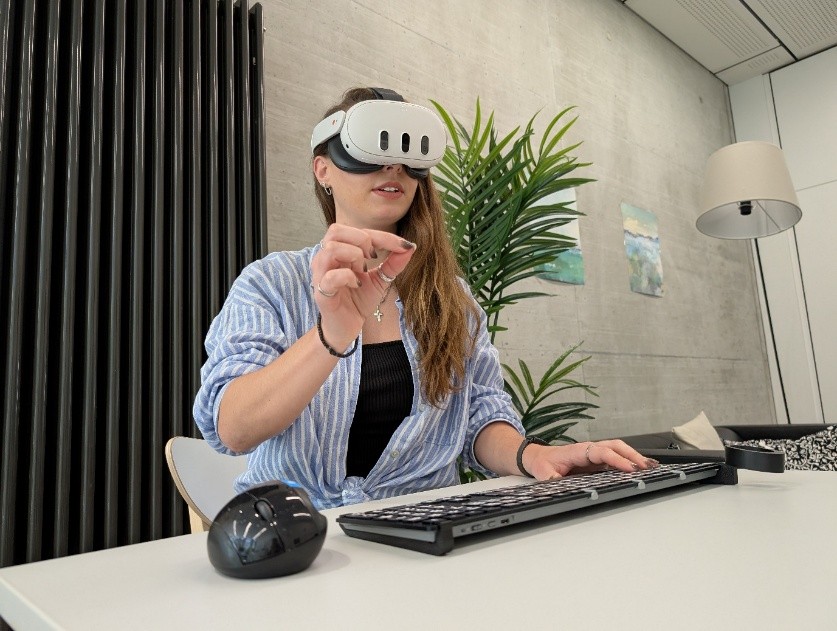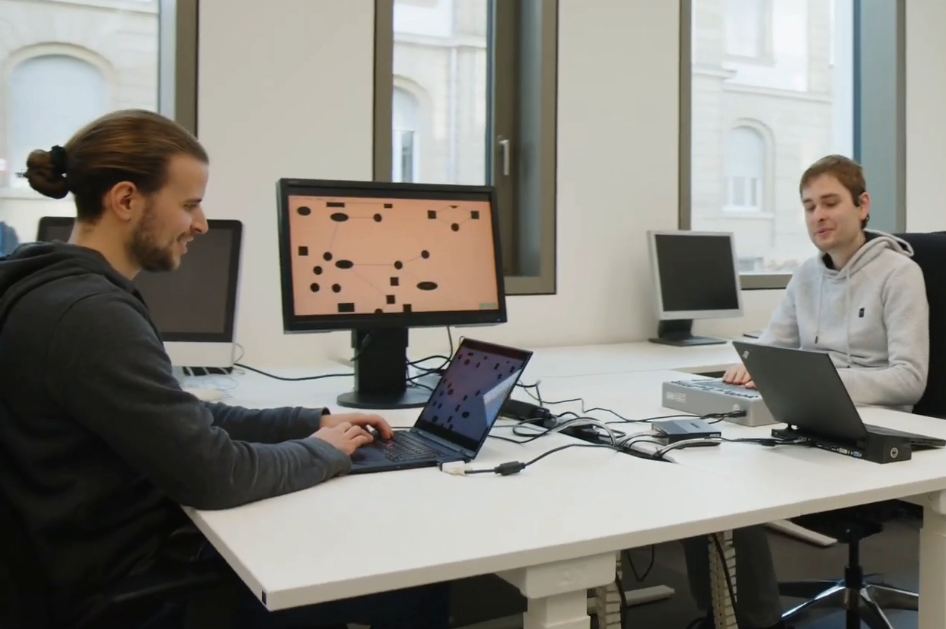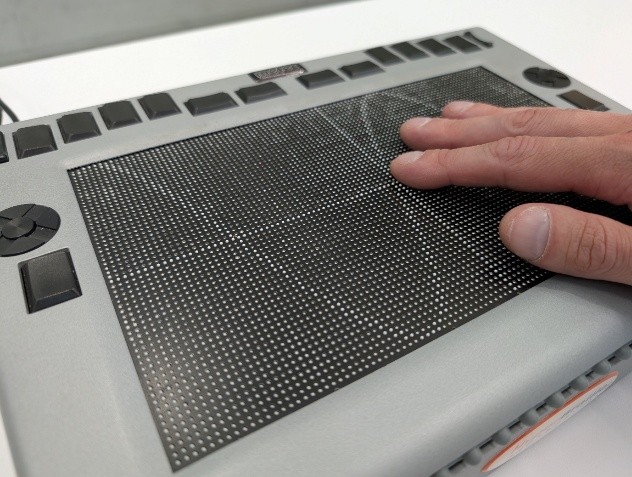Making diversity tangible - rethinking collaboration

How can people with and without visual impairments learn, research and work together - on an equal footing and with equal design options? ACCESS∂KIT, the Center for Digital Accessibility and Assistive Technologies at the Karlsruhe Institute of Technology, is focusing on precisely this question.
The center has long relied on barrier-free materials that are accessible to all, regardless of individual eyesight. This includes, for example, teaching materials that are both tactile and printed in color. This type of preparation enables blind and sighted students to discuss the same content, work on tasks together and learn from each other. This creates learning environments in which diversity is not an obstacle, but a resource.
This approach is being taken a step further with new technologies. Two-dimensional tactile displays on which blind students can not only feel graphics and content, but also edit them directly - for example in STEM subjects - are pioneering. The sense of touch thus becomes an active design element. These innovative interfaces create genuine participation in digital content and enable equal collaboration with sighted fellow students.
But ACCESS∂KIT is much more than a service facility for KIT students: in interdisciplinary research projects, in teaching and as part of university policy networks, the center provides impetus for an inclusive digital transformation. This work is based on the conviction that accessibility is not a technical add-on, but a feature of digitalization - designed from the outset, developed in a participatory manner and socially effective.
One example of this is the InclusiveVR@Work project, which is being carried out jointly by ACCESS∂KIT and Fraunhofer IOSB. The aim is to design virtual working environments in such a way that people with severe visual impairments can also actively participate in them - for example in vocational training and further education. In this project, traditional input methods such as keyboard and mouse are integrated into virtual reality and the working environment is designed in such a way that content and its view can be individually adapted to people's vision. This allows all members of a team to work together on projects - with different perspectives but the same opportunities to contribute.
Solutions like this make it clear: When systems are designed inclusively from the outset, everyone benefits. Dark mode - originally developed for people with visual impairments - is now used by many people to display screen content in a way that is easier on the eyes. Inclusive systems are adaptable, flexible and intuitive - and that is exactly what makes them a real added value for everyone. They create accessibility without users having to adapt. Digital participation is therefore not a special solution, but a matter of course.
One example of this is the InclusiveVR@Work project, which is being carried out jointly by ACCESS∂KIT and Fraunhofer IOSB. The aim is to design virtual working environments in such a way that people with severe visual impairments can also actively participate in them - for example in vocational training and further education. In this project, classic input methods such as keyboard and mouse are integrated into virtual reality and the working environment is designed in such a way that content and its view can be individually adapted to people's vision. This allows all members of a team to work together on projects - with different perspectives but the same opportunities to contribute.
Solutions like this make it clear: When systems are designed inclusively from the outset, everyone benefits. Dark mode - originally developed for people with visual impairments - is now used by many people to display screen content in a way that is easier on the eyes. Inclusive systems are adaptable, flexible and intuitive - and that is exactly what makes them a real added value for everyone. They create accessibility without users having to adapt. Digital participation is therefore not a special solution, but a matter of course.
ACCESS∂KIT at a glance
The Center for Digital Accessibility and Assistive Technologies at KIT pursues an approach in three areas:
Service
ACCESS@KIT supports students with visual impairments by providing advice and barrier-free implementation of teaching and learning opportunities.
Research
ACCESS@KIT investigates how accessibility can be designed - from tactile displays and systems for mobility support to inclusive VR applications. The research is user-centered and practical.
Teaching
ACCESS@KIT incorporates topics such as inclusion and accessibility into teaching at KIT - through seminars, lectures and theses.



 Dr. Karin Müller
Dr. Karin Müller Julia Anken
Julia Anken